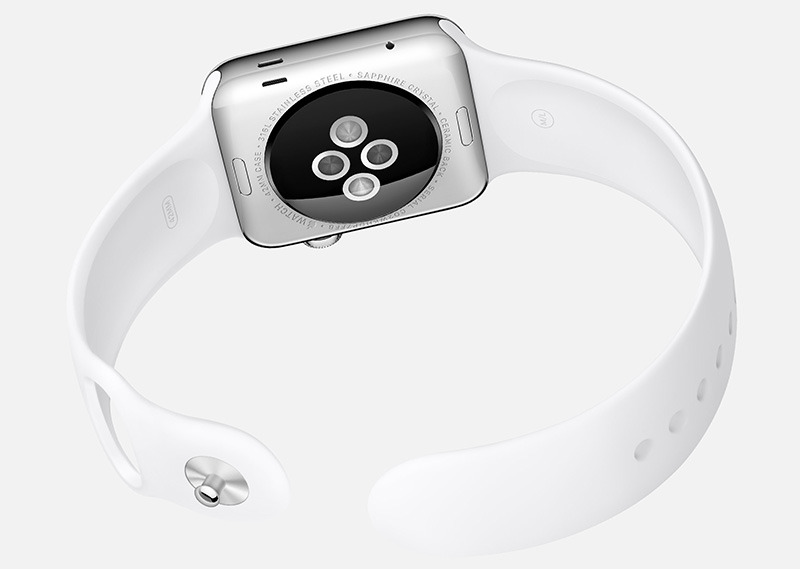Apple Watch users complain of inaccurate heart rate readings during certain exercises
Last updated
A number of Apple Watch users have reported inconsistent or inaccurate heart rate measurements while exercising, with some saying issues have continued even after receiving replacement watches from Apple, calling into question one of the wearable's signature features.
While not yet classified, or acknowledged, as a widespread problem, several Apple Watch owners have observed inaccurate heart rate measurements while participating in high-impact exercises. A thread on Apple's Support Communities forum has received more than 3,000 views and 17 replies, and nearly a dozen threads on the issue have been started on reddit.
In some cases, Apple Watch returns inconsistent heart rate data during workouts such as P90X or CrossFit, though more troubling are complaints concerning exercises endorsed by Apple's own Workout app, including running and outdoor walking. Multiple owners claim Watch readings are often much lower than expected after intense workouts. For example, one user on reddit says his Watch displays a resting heart rate in the range of 60 to 80 beats per minute during strenuous sessions which should register above 140 bpm.
Some Watch owners quantified their claims by comparing Apple Watch readings against dedicated devices that use electrode technology, like Polar's Heart Rate Monitor chest strap, with resulting data found to be grossly out of alignment. These tests stand in contrast to an early comparison of heart rate data collected by the Apple Watch and the Mio Alpha that found Apple's incredibly accurate.
The Apple Watch calculates a user's heart rate by analyzing blood flow in the wrist using a process called photoplethysmography. This approach has limitations, as discovered at launch time when users' with tattoos on their wrists reported being unable to use the device as advertised.
According to Apple's website, different types of motions can also affect the heart rate readings, making rhythmic motions such as running or cycling more accurate than "irregular movements," such as tennis or boxing — which could include interval training programs mentioned in user complaints. Interestingly, while the Apple's documentation lists boxing as an exercise where heart rate readings may be more difficult to attain, the company this month released an Apple Watch ad showcasing exactly that functionality.
There has yet to be a clear explanation as to why certain users are experiencing difficulties with their Watch, though it has been speculated that variations in anatomy could be to blame. For example, some users have found moving Watch up the forearm toward the elbow delivers better performance. Such techniques are not recommended, however, as Watch's sensor is purpose-built and calibrated to be worn as a normal wristwatch.
Apple has not yet officially comment on the concerns raised by Apple Watch users. AppleInsider has reached out for clarification and will update this article when a reply is received.
 AppleInsider Staff
AppleInsider Staff














 Amber Neely
Amber Neely
 Thomas Sibilly
Thomas Sibilly

 William Gallagher
William Gallagher
 Malcolm Owen
Malcolm Owen
 Christine McKee
Christine McKee










60 Comments
This has been a issue from day one for me when doing weights. Running or Walking never seems to be an issue. I went to an apple store and they took down information and such, saying they were sending over to the engineers. 1 week later I did get a call from someone at Apple asking me questions, from there I have not heard a word. This was about 1.5 months ago.
I have nothing to compare it to and only check the bpm readings sporadically.
What I'm still mystified by is the 'movement' calibration (outer ring) in the activity app. Even on days when I've done more than doubled my 'exercise' goal (60 minutes+), the 'movement' has never made it one full completed ring. I'm not even sure what its supposed to be measuring. I had assumed that it was less strenuous movement, but I get a fair amount of that ...
I do enjoy the little incentive that the activity tracker provides. I think that they did a bang-up job with the graphics on that.
I have nothing to compare it to and only check the bpm readings sporadically.
What I'm still mystified by is the 'movement' calibration (outer ring) in the activity app. Even on days when I've done more than doubled my 'exercise' goal (60 minutes+), the 'movement' has never made it one full completed ring. I'm not even sure what its supposed to be measuring. I had assumed that it was less strenuous movement, but I get a fair amount of that ...
I do enjoy the little incentive that the activity tracker provides. I think that they did a bang-up job with the graphics on that.
Movement (out ring) is your calories burn. What is your daily calories burn target?
At my Gym, I use professional equipments and they don't register heart rates, calories even close to real and happens many time in many variation of exercise on the same equipment like treadmill and shows different from one treadmill to other. I am sure apple watch is way better than them.
Movement (out ring) is your calories burn. What is your daily calories burn target?
890 cal